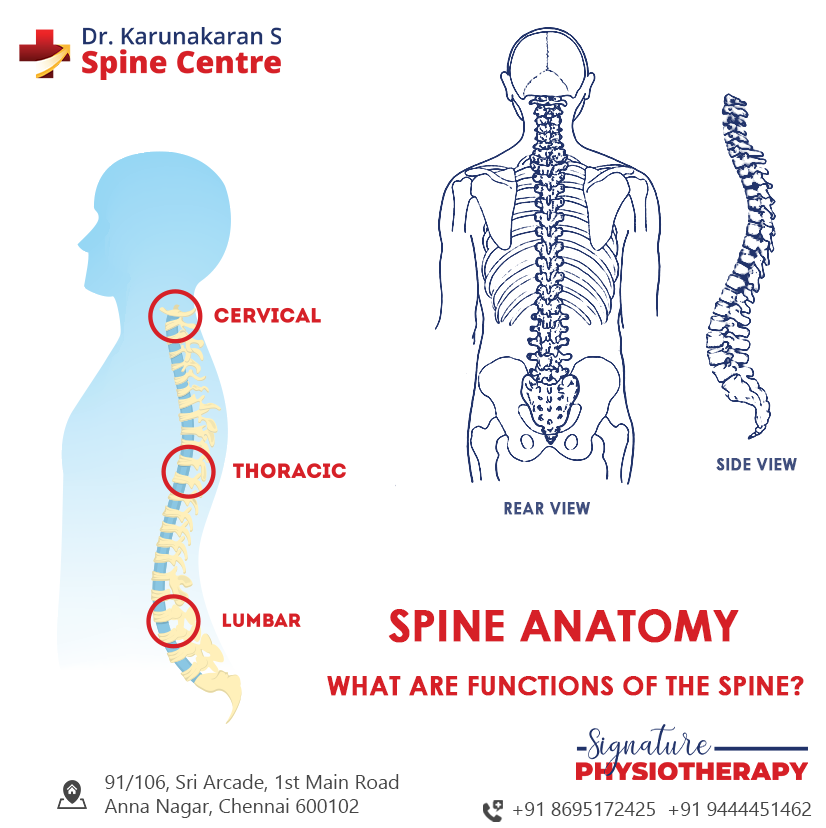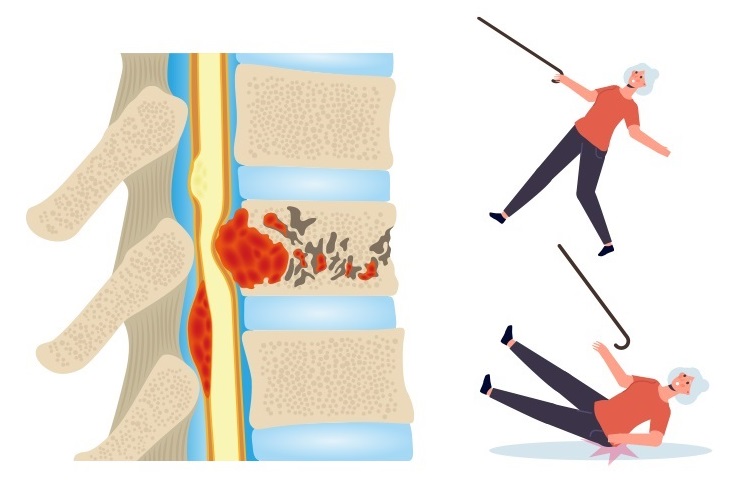
Spine comprises 24 individual bones or vertebrae which together support the human structure as well as nervous system. In addition to this we have sacrum and coccyx at the lower end. Such structure is classified in 5 regions namely cervical, thoracic, lumbar, sacrum and coccyx. Cervical spine consists of 7 vertebrae starting from the neck and referred to as C1 to C7. Thoracic section consists of 12 vertebrae from mid back and is known as T1 to T12. Lumbar spine encompasses 5 vertebrae from L1 to L5. Besides providing support, the spine has adequate shock absorbing qualities.
The spine protects spinal cord, nerve roots and other internal organs, provides flexibility in movements, structural support which also enables upright position.
The cervical spine connects the skull and the upper back at shoulder level. The curve towards the front and then backwards manages the weight and pressure from the skull.
The thoracic spine connects the cervical spine with the lumbar spine and runs from the base of the neck to the abdomen. Besides protecting the spinal cord, it anchors the ribs and protects the heart and lungs. While the cervical spine and lumbar spine offer mobility, the thoracic spine offers stability.
Lumbar spine bears the weight of the body and is susceptible to pain caused by heavy lifting, prolonged sitting and wearing improper shoes.
Sacrum connects hips to the spine bones while coccyx provides for ligaments and muscles in the pelvic floor.
The space between vertebrae contain intervertebral discs which act as shock absorbers and the gelatinous cushions protect vertebral bones when a person moves.
Apart from imaging tests, neurological examinations which check attributes including reflexes, muscle strength, comfort in walking, ability to feel light touches, prickles and vibration are also conducted.

Dislocation of vertebrae anywhere in the spine is known as spinal fracture. It is caused by injury or trauma that follows high velocity impact from car accidents, falls and sports. The results of spine fractures may be mild muscle and ligament damages to serious spinal cord damages.
Spine fractures may be classified as compression fracture, axial burst fracture and chance fracture. While compression fracture and axial burst fracture are caused by osteoporosis and loss of height due to vertical fall impact respectively, chance fracture happens when vertebrae is pulled apart due to violent forward flexed injury like car accident.
Spinal fractures are treated through physical rehabilitation therapies and medications for entities like bowel and bladder dysfunctions, pain, muscle spasticity and blood pressure.